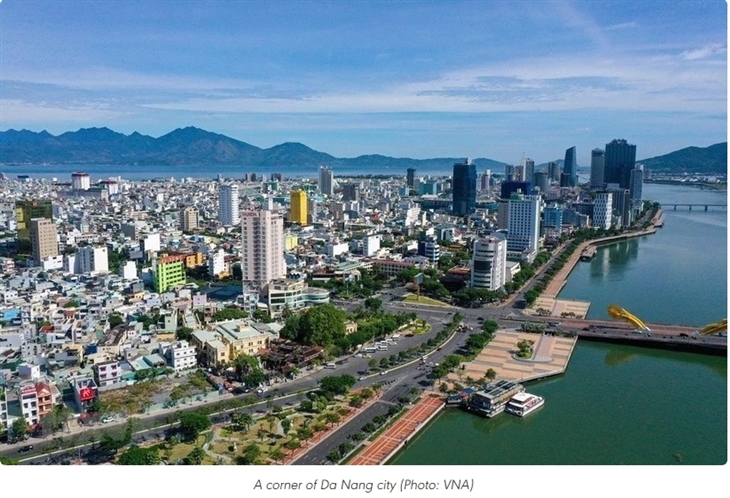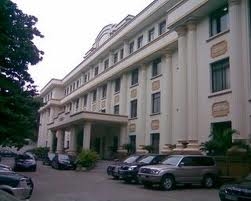Free trade zones hoped to give boost to economic growth
Thursday, July 31,2025
AsemconnectVietnam - In addition to traditional growth drivers such as investment, consumption, and exports, new growth drivers are also emphasised. Among them, new models like international financial centres and free trade zones will be prioritised and actively promoted.
Many Vietnamese localities are now ambitiously planning to form free trade zones (FTZs), with the aim of creating breakthroughs in economic growth.
Laying foundations for free trade zones
Khanh Hoa is among the latest provinces to announce plans for establishing an FTZ. At a recent meeting with enterprises and investors, Chairman of the provincial People’s Committee Tran Quoc Nam stated that the province is studying the model for the Khanh Hoa Free Trade Zone, with a desire to create a gateway for marine economic development linked with high-end international services. The proposed location is the Van Phong Economic Zone - one of the south central province’s designated growth engines.
The central province of Ha Tinh also harbours an ambition to develop an FTZ in Vung Ang. In mid-July, the provincial People’s Committee held a special meeting to discuss the plan to establish the Vung Ang Free Trade Zone, envisioning it as an international logistics hub serving the entire Indochina region. The provincial Department of Finance has been tasked with working with relevant stakeholders to draft the proposal and submit it to the provincial Party Committee’s Standing Board by August 10.
Not only Khanh Hoa and Ha Tinh, but many other localities across the country are also "laying the groundwork" in hopes of being granted permission to establish FTZs. Dong Nai is one example. The southern province aims to develop an FTZ linked to Long Thanh Airport infrastructure and surrounding facilities.
Preliminary outlines for this zone have been drafted, with plans for four functional subzones: manufacturing, logistics, finance–commerce–services, and research, innovation, information technology, and digital economy. Dong Nai estimates that the cost to build the FTZ will be around 16 billion USD.
Similarly, Ba Ria–Vung Tau (now part of Ho Chi Minh City) previously strived to develop an FTZ associated with the seaport in the Cai Mep Ha area. This zone was planned to cover over 3,749 hectares, focusing on digital economy, green economy, and circular economy as its core and driving forces.
While many localities are preparing, in reality only two FTZs - in Da Nang and Hai Phong - have been approved by the National Assembly for pilot establishment, with many breakthrough and superior policies and mechanisms. Among them, the Da Nang Free Trade Zone was officially established by the Government in mid-June, covering more than 1,880 hectares, with the goal of becoming a regional economic centre and playing the role as a strategic growth pole for the central region and the whole country in the context of new development.
In the long term, the Da Nang Free Trade Zone will be developed into an important link in the global and Asia-Pacific regional supply chain network, serving as a manufacturing hub and an international cargo transit centre connected with Lien Chieu Port, Da Nang International Airport, and the East-West Economic Corridor.
A boost for growth
The Government has set a clear economic target for the coming period: achieving double-digit growth starting from 2026. For this year, the target growth rate is 8.3–8.5%. In addition to traditional growth drivers such as investment, consumption, and exports, new growth drivers are also emphasised. Among them, new models like international financial centres and free trade zones will be prioritised and actively promoted.
When presenting to the National Assembly the special mechanism for Hai Phong, which includes the establishment of the Hai Phong Free Trade Zone, Minister of Finance Nguyen Van Thang affirmed that this special mechanism will lay the foundation for the northern port city to become a new growth pole in the Red River Delta region and contributing to the goal of double-digit growth in the 2026–2030 period.
Regarding the Hai Phong Free Trade Zone specifically, Thang stated that this model will help attract investment capital and become a logistics hub thanks to special mechanisms on foreign currency and land leasing.
With the FTZ model, Vietnam can become a hub for transshipment and packaging, and connecting global supply chains, thereby increasing foreign currency earnings and transshipment activities, he said.
According to the minister, preferential and breakthrough policies for the FTZs will be implemented cautiously, with strict inspection and supervision. After the pilot period, if effective, expansion and legalisation of the model may be proposed.
On the day Da Nang officially announced the establishment of its FTZ under the Prime Minister’s decision, Deputy Prime Minister Nguyen Hoa Binh emphasised that if successfully developed, this zone will be a “catalyst” for connecting the global economy, promoting development not only for the city today but also for its future, the region, and the country as a whole./.
Source: en.vietnamplus.vn/free-trade-zones-hoped-to-give-boost-to-economic-growth-post323729.vnp
Laying foundations for free trade zones
Khanh Hoa is among the latest provinces to announce plans for establishing an FTZ. At a recent meeting with enterprises and investors, Chairman of the provincial People’s Committee Tran Quoc Nam stated that the province is studying the model for the Khanh Hoa Free Trade Zone, with a desire to create a gateway for marine economic development linked with high-end international services. The proposed location is the Van Phong Economic Zone - one of the south central province’s designated growth engines.
The central province of Ha Tinh also harbours an ambition to develop an FTZ in Vung Ang. In mid-July, the provincial People’s Committee held a special meeting to discuss the plan to establish the Vung Ang Free Trade Zone, envisioning it as an international logistics hub serving the entire Indochina region. The provincial Department of Finance has been tasked with working with relevant stakeholders to draft the proposal and submit it to the provincial Party Committee’s Standing Board by August 10.
Not only Khanh Hoa and Ha Tinh, but many other localities across the country are also "laying the groundwork" in hopes of being granted permission to establish FTZs. Dong Nai is one example. The southern province aims to develop an FTZ linked to Long Thanh Airport infrastructure and surrounding facilities.
Preliminary outlines for this zone have been drafted, with plans for four functional subzones: manufacturing, logistics, finance–commerce–services, and research, innovation, information technology, and digital economy. Dong Nai estimates that the cost to build the FTZ will be around 16 billion USD.
Similarly, Ba Ria–Vung Tau (now part of Ho Chi Minh City) previously strived to develop an FTZ associated with the seaport in the Cai Mep Ha area. This zone was planned to cover over 3,749 hectares, focusing on digital economy, green economy, and circular economy as its core and driving forces.
While many localities are preparing, in reality only two FTZs - in Da Nang and Hai Phong - have been approved by the National Assembly for pilot establishment, with many breakthrough and superior policies and mechanisms. Among them, the Da Nang Free Trade Zone was officially established by the Government in mid-June, covering more than 1,880 hectares, with the goal of becoming a regional economic centre and playing the role as a strategic growth pole for the central region and the whole country in the context of new development.
In the long term, the Da Nang Free Trade Zone will be developed into an important link in the global and Asia-Pacific regional supply chain network, serving as a manufacturing hub and an international cargo transit centre connected with Lien Chieu Port, Da Nang International Airport, and the East-West Economic Corridor.
A boost for growth
The Government has set a clear economic target for the coming period: achieving double-digit growth starting from 2026. For this year, the target growth rate is 8.3–8.5%. In addition to traditional growth drivers such as investment, consumption, and exports, new growth drivers are also emphasised. Among them, new models like international financial centres and free trade zones will be prioritised and actively promoted.
When presenting to the National Assembly the special mechanism for Hai Phong, which includes the establishment of the Hai Phong Free Trade Zone, Minister of Finance Nguyen Van Thang affirmed that this special mechanism will lay the foundation for the northern port city to become a new growth pole in the Red River Delta region and contributing to the goal of double-digit growth in the 2026–2030 period.
Regarding the Hai Phong Free Trade Zone specifically, Thang stated that this model will help attract investment capital and become a logistics hub thanks to special mechanisms on foreign currency and land leasing.
With the FTZ model, Vietnam can become a hub for transshipment and packaging, and connecting global supply chains, thereby increasing foreign currency earnings and transshipment activities, he said.
According to the minister, preferential and breakthrough policies for the FTZs will be implemented cautiously, with strict inspection and supervision. After the pilot period, if effective, expansion and legalisation of the model may be proposed.
On the day Da Nang officially announced the establishment of its FTZ under the Prime Minister’s decision, Deputy Prime Minister Nguyen Hoa Binh emphasised that if successfully developed, this zone will be a “catalyst” for connecting the global economy, promoting development not only for the city today but also for its future, the region, and the country as a whole./.
Source: en.vietnamplus.vn/free-trade-zones-hoped-to-give-boost-to-economic-growth-post323729.vnp
EVFTA after 5 years: Trade Counselor highlights gains, challenges, strategic path forward
Vietnam, Tanzania explore local cooperation opportunities
Swiss-Viet Economic Forum places strong expectations on top Vietnamese legislator’s trip
Germany pushes ratification of EU - Vietnam Investment Protection Agreement
Mega Us Expo 2025 to boost Vietnam–RoK trade, innovation cooperation
Vietnamese lychees on shelves of US retail giant Costco
US promotes agricultural products to Vietnamese consumers
Vietnam highlighted as next growth engine in ASEAN at Hong Kong seminar
Vietnam fosters comprehensive cooperation with France's Normandy region
Hai Phong exhibition at ABAC 3 highlights local economy, specialties
Conference seeks ways to promote Vietnam – Cambodia trade
Czech businesses ramp up pursuit of opportunities in Vietnam
Private sector's engagement advances normalisation of Vietnam - US ties: Ambassador
Vietnamese products make mark at Europe’s largest fashion, textile fair

Plan of Hai Duong province for a period of 2021 - 2030, ...
Organize space reasonably and harmoniously, focusing on connecting Hai Duong in common development space, actively contributing to the ...Plan of Hau Giang province in a period of 2021 - 2030, ...
Sustainable forestry development program in a period of ...

AI opens new path for image industry: Insiders
Though the term "image industry" remains relatively new in the local context, the development of a creative ecosystem driven by AI will ...Hanoi’s street food culture gains ground with Michelin nods
Draw held for 2025 Davis Cup Asia/Oceania Group III in Bac ...
Da Nang Museum opens an exhibition of rare ancient ...
An Giang races to complete UNESCO nomination dossier for ...



